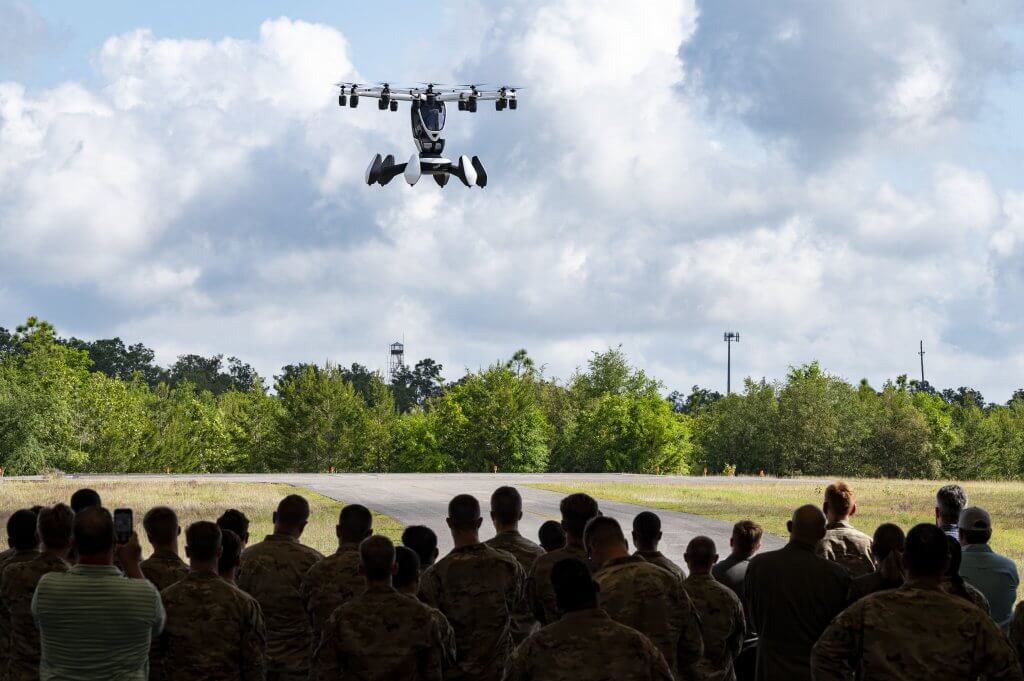Here’s a quick heads-up on five tech-related trends that are sure to make tomorrow’s headlines — and maybe even your unit’s property book:
More direct-fire support for dismounts
Designed to support dismounted infantry troops with a turreted 105mm cannon, the four-person Mobile-Protected Firepower (MPF) tracked vehicle is slated to be fielded to at least one U.S Army Infantry Brigade Combat Team as early as 2025. Approximately 30 tons lighter and smaller than the M1 Abrams main battle tank, the vehicle will be air-transportable by C-17. (Despite its appearance and functionality, however, developers balk at calling the MPF a “light tank.”)
A $1.14 billion contract for an initial 96 vehicles was recently awarded to General Dynamics Land Systems, with 26 of the vehicles projected to be produced by December 2023. The Army plans to field four battalions’ worth by 2035.
Armored up, but still manned — for now
The venerable M1 Abrams tank notably continues to be updated and upgraded throughout the Total Force. In 2023, for example, the Tennessee National Guard’s 278th Armored Cavalry Regiment is scheduled to change out its M1A1 Abrams for approximately 90 Abrams M1A2 SEPv3. The alphabet soup stands for “System Enhancement Program, version 3,” but you can call them V-3s or Vic-3s.
Two other units, Minnesota’s 1st Armored Brigade Combat Team, 34th Infantry Division and North Carolina’s 30th Armored Brigade Combat Team, are on the docket for the V3 upgrade by fiscal year 2025. Both active-duty and reserve units will operate V2 and V3 models.
Upgrades to the M2A3 version of the Bradley Fighting Vehicle are also in store for the Tennessee unit, as it’s slated to receive an equipment transfer from an active-component unit upgrading to the A4 version.
Meanwhile, results toward an Armywide acquisition of a proposed replacement to the Bradley might be soon available. After canceling an earlier design competition, the U.S. Army awarded a $299.4 million contract to five companies in January 2021 to develop Optionally Manned Fighting Vehicle (OMFV) prototypes for mid-2023 delivery.
Drivers, don’t quit your MOS, however: Industry observers speculate that initially fielded OMFV designs won’t be fully autonomous. Rather, they’re more likely to feature optional “tele-operation” or remote-control modes.
Lifting the body electric
Looking like a bit like the lozenge-shaped robot from “Lost in Space” (1998), the U.S. Air Force Agility Prime prototype is just one effort to develop an electric-powered vertical take-off and landing (VTOL) platform — a “flying car” that doesn’t use fuel.
Earlier this year, Lift Aircraft’s 16-propeller Hexa platform was successfully demonstrated to an audience of airmen at Hurlburt Field, Florida. Sparked via the Air Force Research Laboratory private-public partnership hub known as AFWERX, the Air Force has requested funds to acquire five such eVTOL platforms in FY 23.
Release the (robot) dogs of war
Dancing robots are often featured in viral internet videos, but 142nd Security Forces Squadron personnel at the Portland Air National Guard Base, Oregon, recently fielded at least one semi-autonomous “robot dog,” with plans to acquire a total of three. Humans can run patrols either remotely or working alongside the Quadrupedal-Unmanned Ground Vehicles. Developers of similar products see potential not only in augmenting security, but in other military missions such as Explosive Ordnance Disposal.
Autonomous systems continue to be of interest in emerging ground and air transportation research as well. In early 2022, Defense Advanced Research Projects Agency personnel demonstrated an “Aircrew Labor In-Cockpit Automation System,” flying a pilotless UH-60A over Fort Campbell, Kentucky, for approximately 30 minutes. In 2021, as part of the annual Project Convergence event hosted by U.S. Army Futures Command, 82nd Airborne Division soldiers at Yuma Proving Ground experimented with using tracked “expeditionary modular autonomous vehicles” to assist in tactical supply missions.
Army aviation seeks a big lift … or two
Two U.S. Army Future Vertical Lift (FVL) programs are nearing next phases toward acquisition and fielding. One FVL program seeks a potential troop-carrying replacement for such rotary-wing workhorses as the UH-60 Blackhawk and CH-47 Chinook.
Announcement of design-competition results from the Future Long-Range Assault Aircraft (FLRAA) effort are predicted to be forthcoming by end of this fiscal year. Prototypes would be required by 2025, with fielding to the operational force by 2030.
In competition are V-280 Valor tilt-wing aircraft from Bell, and the double-rotored tail-pusher Defiant X from Sikorsky and Boeing.
With the Total Force’s current fleet of UH-60s split 60-40 between the National Guard and active component, leaders in both are eager to see how the FLRAA selection plays out — not only in terms of new capabilities, but also new challenges in fleet maintenance and personnel management.
The second FVL program seeks a replacement for rotary-wing scout attack aircraft such as the OH-58 Kiowa. Still in competition is the two-seater 360 Invictus from Bell, and the two-seater Raider X from Sikorsky.
The latter shares technology developed for the Defiant X utility platform. A fly-off for the Future Attack Reconnaissance Aircraft (FARA) program could be scheduled as early as this November, but any announced results may have to wait for 2023.
In the meantime, the National Guard continues to maintain and improve its heavily defended fleet of AH-64 Apaches.
Under a 2013 Aviation Restructuring Initiative, the Army proposed pulling all AH-64 aircraft into the active component, a move that was successfully resisted by National Guard leaders and lobbyists.
At the same time, the initiative also retired the aging OH-58 fleet across the Total Force. Starting in June of this year, South Carolina Army National Guard’s 1st Attack Reconnaissance Battalion (ARB), 151st Aviation Regiment, began taking delivery of 24 new AH-64E version 6 Guardian aircraft. Accelerated plans call for the National Guard’s three remaining attack-helicopter units — North Carolina’s 1st ARB, 130th Attack Regiment; Utah’s 1st ARB, 211th Aviation Regiment; and Texas’s 1st ARB, 149th Aviation Regiment — to take similar deliveries by end of FY 2026.

